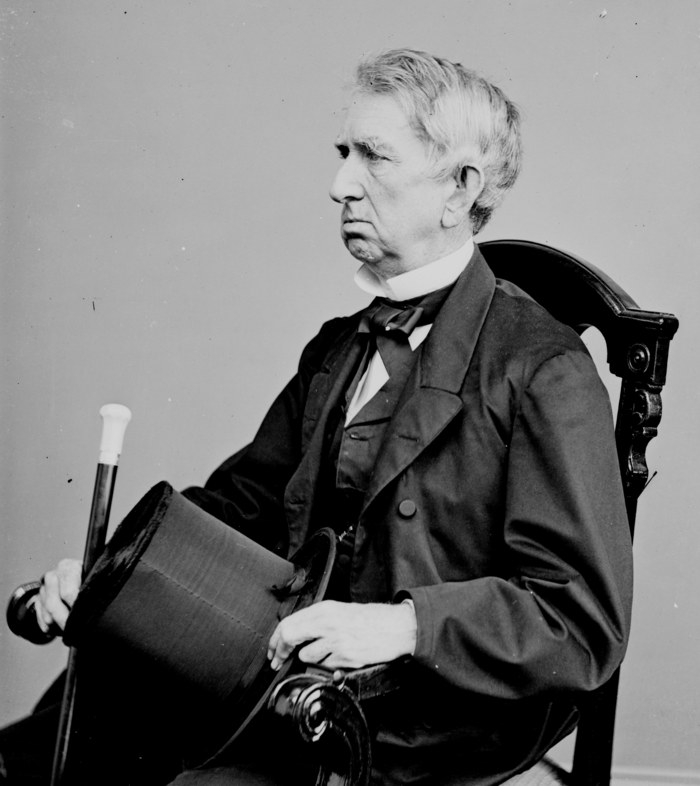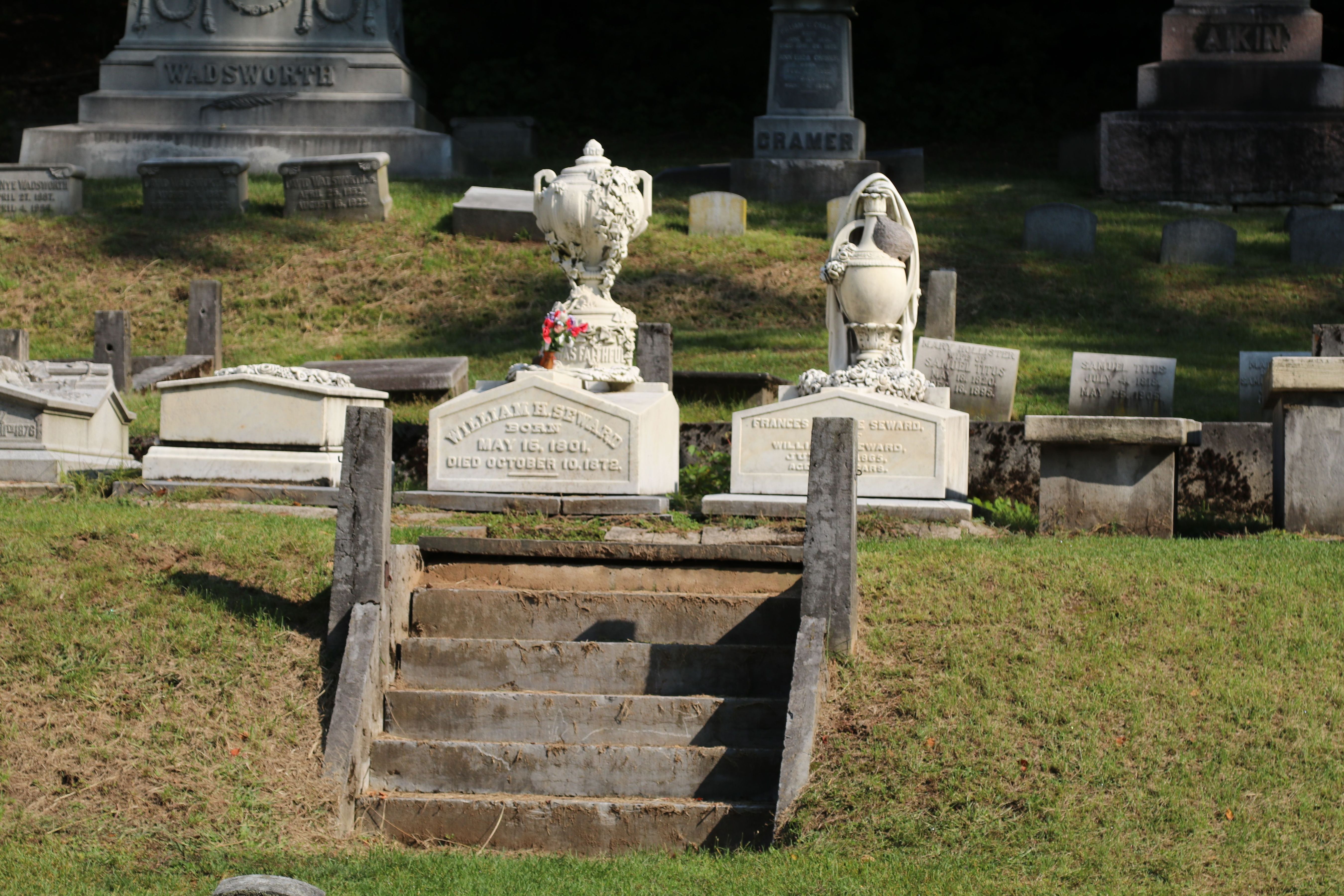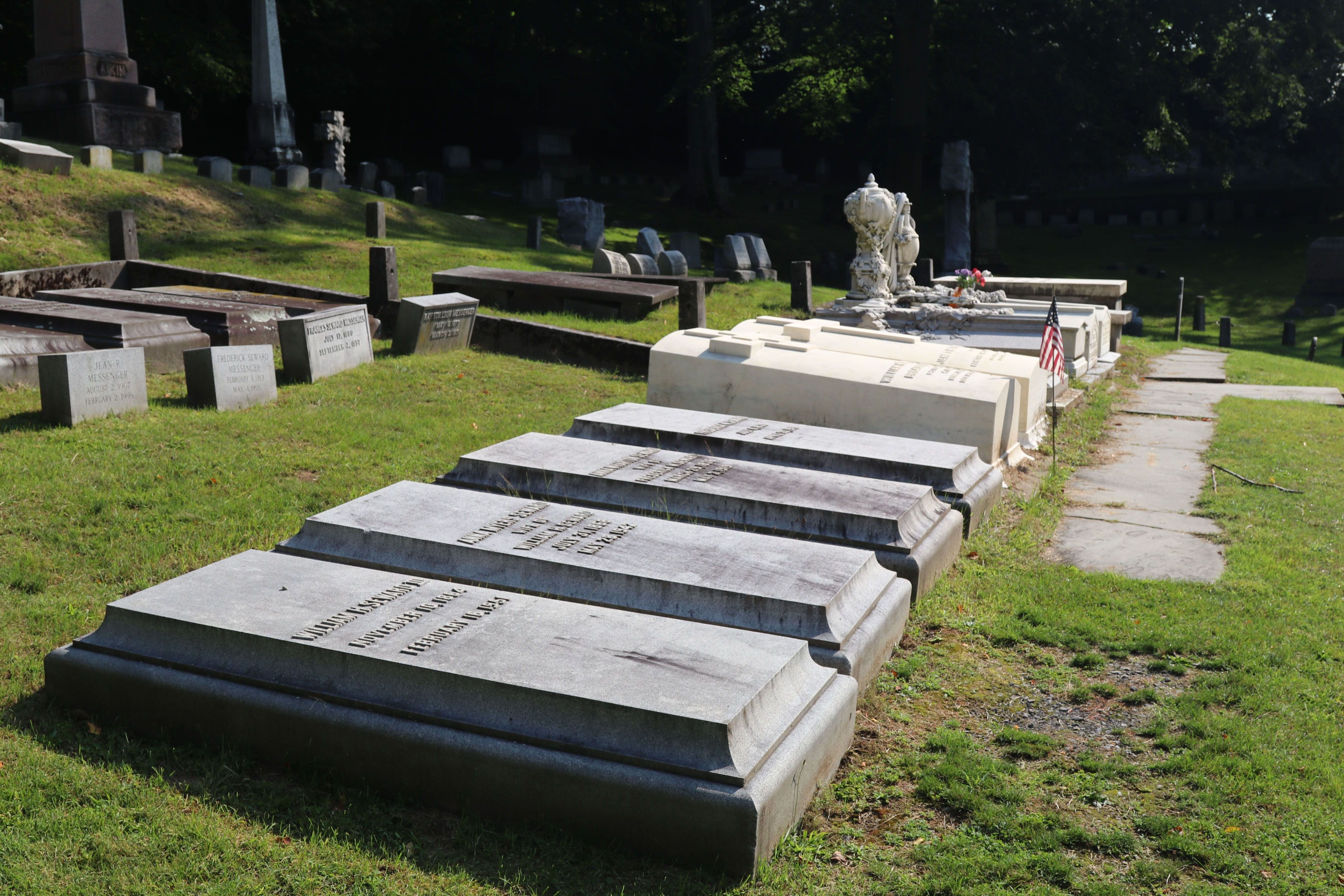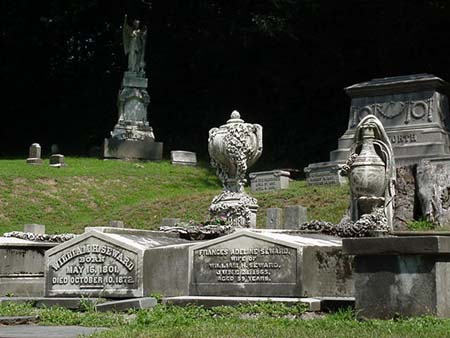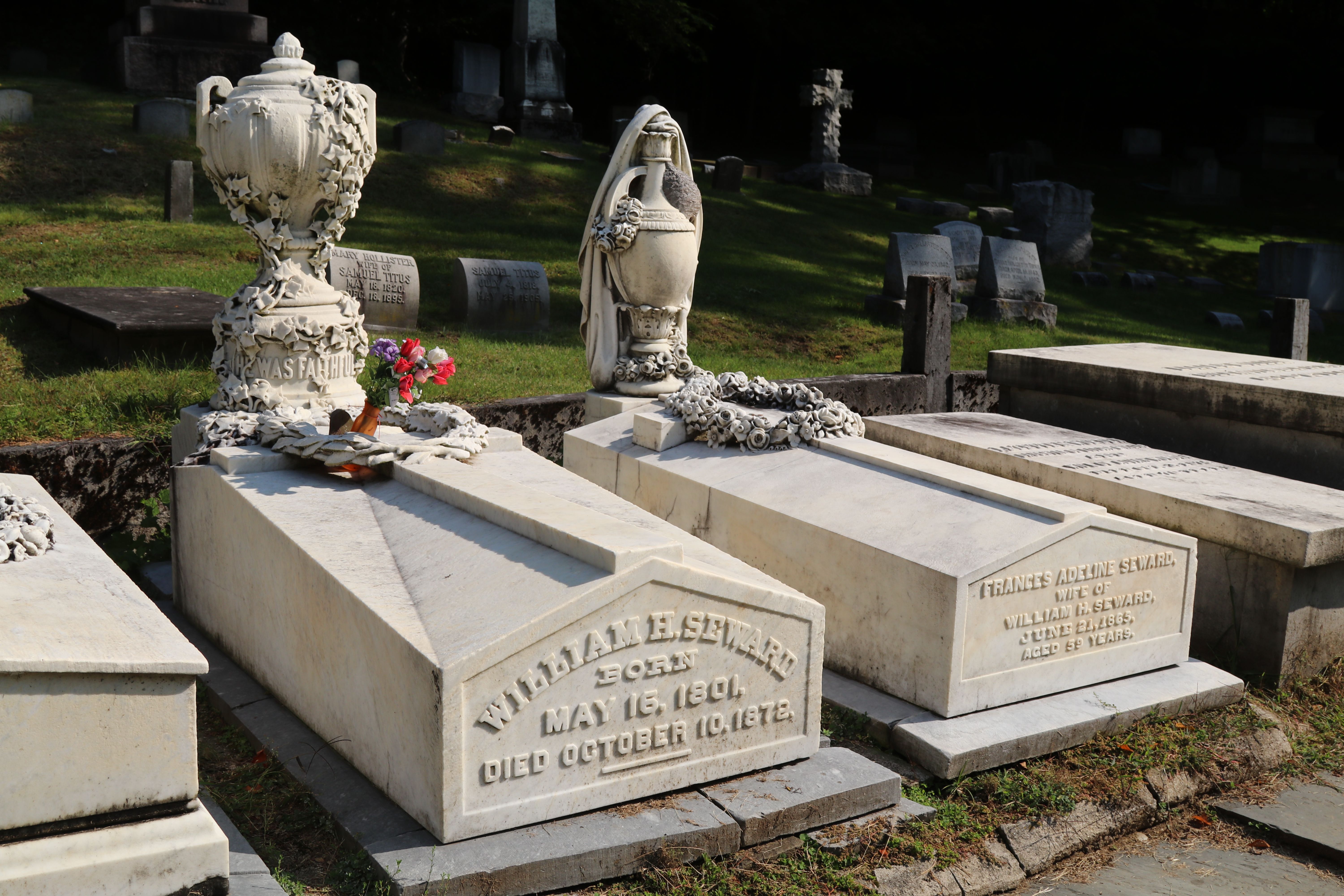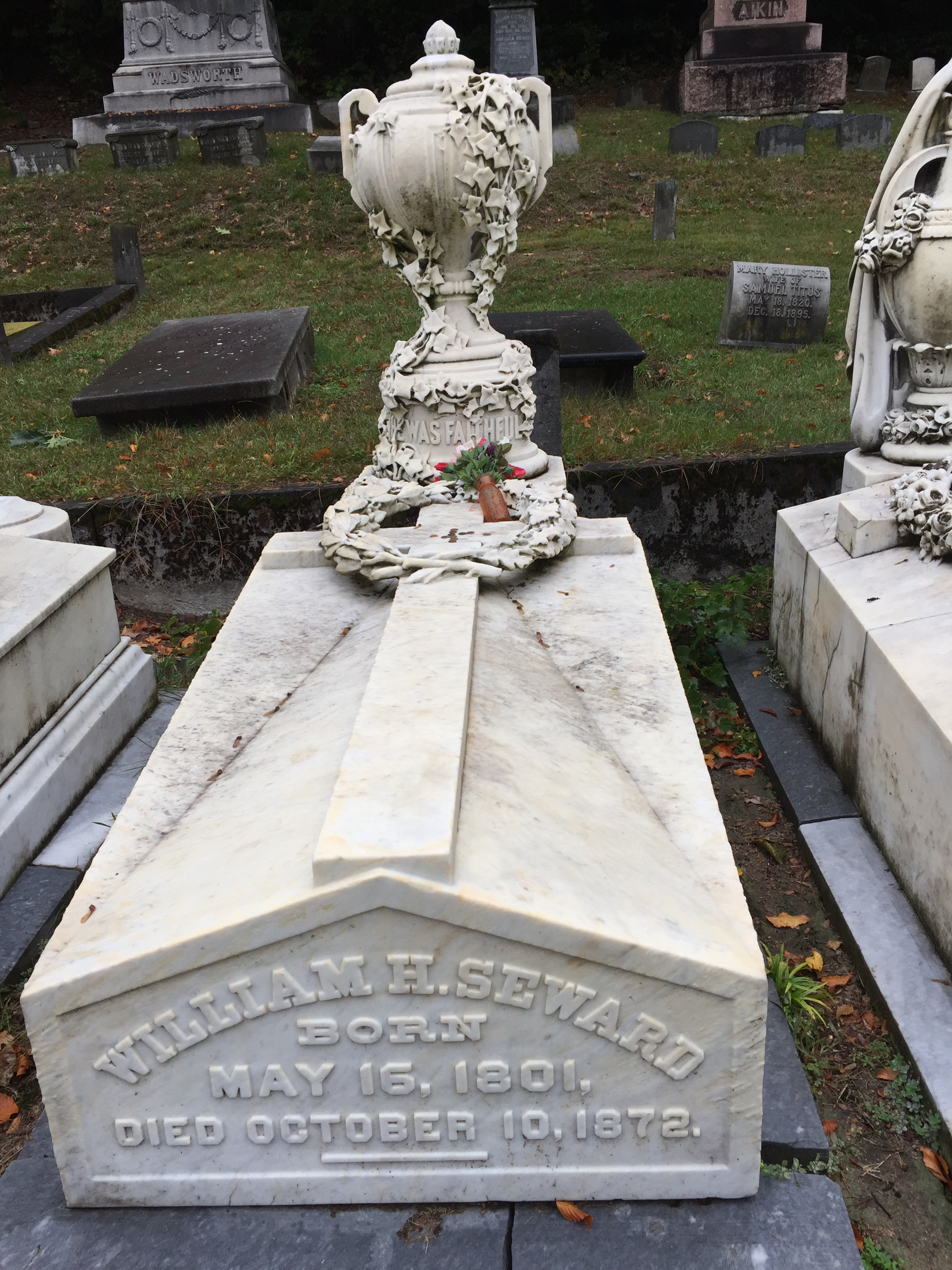U.S. Senator, Presidential Cabinet Secretary, New York Governor. He received recognition as a 19th-century American politician, yet his social life may have brought him more notoriety. Born in Florida, New York, his father was a wealthy physician who later became a judge. Tutored at home with some formal education in the local school, he was admitted to Union College in Schenectady and, upon graduation, studied law under lawyers in Goshen and New York City and was admitted to the state bar at the age of 21. Seward entered into a law partnership with Judge Elijah Miller in Auburn, New York. The judge was destined to become his father-in-law after receiving permission to marry his daughter with the condition that the couple would have to share his home. He quickly developed an interest in politics, winning election to the New York State Senate, then went on to become the 12th Governor of New York and finally a U.S. Senator. He and his wife were devout abolitionists and even used their homes to shelter fugitive slaves. He was instrumental in helping Harriet Tubman to settle in Auburn and secured property on his street where she lived until her death. Head of the Republican Party, Seward was the leading candidate for the Presidential nomination. However, the nomination went to Abraham Lincoln, and due to his support of Lincoln during the presidential campaign, he was named the 24th United States Secretary of State. His powerful leadership proved invaluable to the Union during the American Civil War. He smoothed over American-British tensions during the Trent Affair, dissuading Britain from recognizing the Confederacy, and was instrumental in getting France to withdraw from Mexico using the Monroe Doctrine as his authority. He helped to write the Emancipation Proclamation. In the spring of 1865, he was in a carriage accident, receiving injuries that caused him to be bedridden. On April 14, 1865, the night of President Lincoln's assassination at Ford Theater, Seward was seriously wounded, with his throat being slashed twice by a would-be assassin in his home. One of his sons was badly battered, and his wife and only daughter also received wounds. Two months later, Seward's wife died of shock following a heart attack, and his daughter, Fanny, died within months of grief and tuberculosis. Although he never fully recuperated from his wounds, he remained as Secretary of State under Andrew Johnson. He was an enthusiastic expansionist and negotiated the annexation of the Midway Islands and the purchase of Alaska from the Russians. He retired from politics at the end of Johnson's term in 1869. In 1870, he legally adopted the 26-year-old Olive Risley, although her father was still alive and well, and made her heir to his estate along with his sons. She became his traveling companion while editing his best-selling book, "Travels Around the World." After touring the Pacific Northwest, he returned to Auburn, New York, remaining active by writing, with his main work being "Life of John Quincy Adams." He died in his office as he lay on his office couch with his family gathered around. His foresight was not generally acknowledged for the purchase of Alaska, and his detractors tabbed the venture "Seward's folly, Seward's Icebox, and Johnson's polar bear garden." The seaside town of Seward, Alaska, located on the Kenai Peninsula, is named in his honor. Seward's Day is a holiday in Alaska and is celebrated on the last Monday of March. The Seward House, constructed by his father-in-law in Auburn, is a popular tourist attraction. The house became the home of not only William Seward but also four generations of the family until 1951. Today, the house is a National Historic Landmark and houses the original collection of furniture, household items, decorative arts, documents, and family photographs.
U.S. Senator, Presidential Cabinet Secretary, New York Governor. He received recognition as a 19th-century American politician, yet his social life may have brought him more notoriety. Born in Florida, New York, his father was a wealthy physician who later became a judge. Tutored at home with some formal education in the local school, he was admitted to Union College in Schenectady and, upon graduation, studied law under lawyers in Goshen and New York City and was admitted to the state bar at the age of 21. Seward entered into a law partnership with Judge Elijah Miller in Auburn, New York. The judge was destined to become his father-in-law after receiving permission to marry his daughter with the condition that the couple would have to share his home. He quickly developed an interest in politics, winning election to the New York State Senate, then went on to become the 12th Governor of New York and finally a U.S. Senator. He and his wife were devout abolitionists and even used their homes to shelter fugitive slaves. He was instrumental in helping Harriet Tubman to settle in Auburn and secured property on his street where she lived until her death. Head of the Republican Party, Seward was the leading candidate for the Presidential nomination. However, the nomination went to Abraham Lincoln, and due to his support of Lincoln during the presidential campaign, he was named the 24th United States Secretary of State. His powerful leadership proved invaluable to the Union during the American Civil War. He smoothed over American-British tensions during the Trent Affair, dissuading Britain from recognizing the Confederacy, and was instrumental in getting France to withdraw from Mexico using the Monroe Doctrine as his authority. He helped to write the Emancipation Proclamation. In the spring of 1865, he was in a carriage accident, receiving injuries that caused him to be bedridden. On April 14, 1865, the night of President Lincoln's assassination at Ford Theater, Seward was seriously wounded, with his throat being slashed twice by a would-be assassin in his home. One of his sons was badly battered, and his wife and only daughter also received wounds. Two months later, Seward's wife died of shock following a heart attack, and his daughter, Fanny, died within months of grief and tuberculosis. Although he never fully recuperated from his wounds, he remained as Secretary of State under Andrew Johnson. He was an enthusiastic expansionist and negotiated the annexation of the Midway Islands and the purchase of Alaska from the Russians. He retired from politics at the end of Johnson's term in 1869. In 1870, he legally adopted the 26-year-old Olive Risley, although her father was still alive and well, and made her heir to his estate along with his sons. She became his traveling companion while editing his best-selling book, "Travels Around the World." After touring the Pacific Northwest, he returned to Auburn, New York, remaining active by writing, with his main work being "Life of John Quincy Adams." He died in his office as he lay on his office couch with his family gathered around. His foresight was not generally acknowledged for the purchase of Alaska, and his detractors tabbed the venture "Seward's folly, Seward's Icebox, and Johnson's polar bear garden." The seaside town of Seward, Alaska, located on the Kenai Peninsula, is named in his honor. Seward's Day is a holiday in Alaska and is celebrated on the last Monday of March. The Seward House, constructed by his father-in-law in Auburn, is a popular tourist attraction. The house became the home of not only William Seward but also four generations of the family until 1951. Today, the house is a National Historic Landmark and houses the original collection of furniture, household items, decorative arts, documents, and family photographs.
Bio by: Donald Greyfield
Family Members
Advertisement
See more Seward memorials in:
Records on Ancestry
Sponsored by Ancestry
Advertisement












